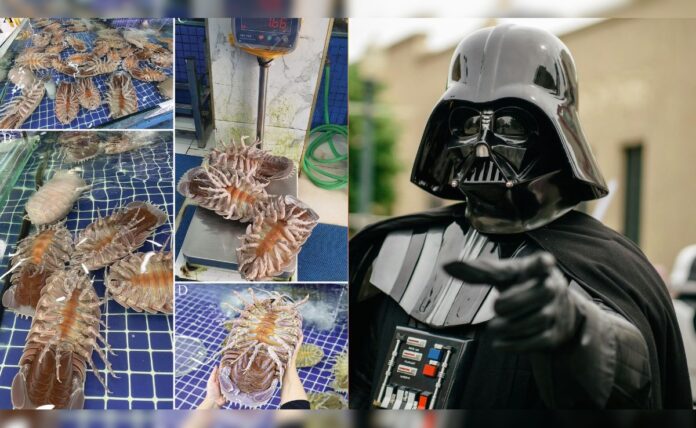Scientists have discovered an alien-looking, ‘supergiant’ sea bug species in Vietnam and named it Bathynomus vaderi after Darth Vader from the Star Wars franchise, due to its head resembling the Sith Lord’s iconic helmet. This “supergiant” isopod, part of the Bathynomus genus, can grow to a length of up to 32.5 cm (12.8 inches) and weigh over a kilogram, according to a study published in ZooKeys.
The discovery was made while scientists were exploring culinary trends in Vietnam, where these giant sea bugs, known locally as “bo bein,” have become a delicacy, with people comparing the quality of the meat to lobsters.
“Smaller eating establishments keep the isopods in ice boxes to be cooked when asked, while large restaurants have dedicated tanks with chilled water to keep and display the animals,” the study highlighted.
The scientists do not have complete information if B vaderi was available elsewhere but dealers and fishermen informed that they obtained these creatures from deep waters near the Spratly Islands — a contested archipelago located in the South China Sea.
Apart from the Darth Vader-like head, B vaderi has a pronounced depression in its hip bone and a distinctive bony ridge protruding from its coracoid bone, setting it apart from other supergiant isopods.
Also Read | Chinese Influencer Dupes Childless Woman Of Rs 66 Lakh By Calling Her Mother
Appetite for the supergiant bug
In 2017, the price was up to Rs 6,854 (2 million Vietnamese Dong) per kilogram. However, by 2023 the price dropped to around Rs 5,100 (1.5 million Vietnamese Dong) per kilogram and by early 2024, it was about Rs 3,400 (1 million Vietnamese Dong) per kilogram as the demand for the bug increased, leading to more fishing.
“In 2017, specimens had to be pre-ordered, and diners had to wait up to a month to collect their Bathynomus specimens in seafood outlets in Hanoi. Today, some seafood markets in Hanoi, Ho Chi Minh City, and Da Nang City keep up to 30 individuals in their chilled water tanks for customers to buy,” the researchers noted.
Despite being huge and menacing looking, B. vaderi is not the largest isopod species. The top spot is occupied by B jamesi, which can grow to around 50 cm and weigh approximately 2.6 kilograms.
Despite their size, these creatures managed to remain hidden, showcasing the vast territories that remain unexplored beneath the ocean’s surface.




